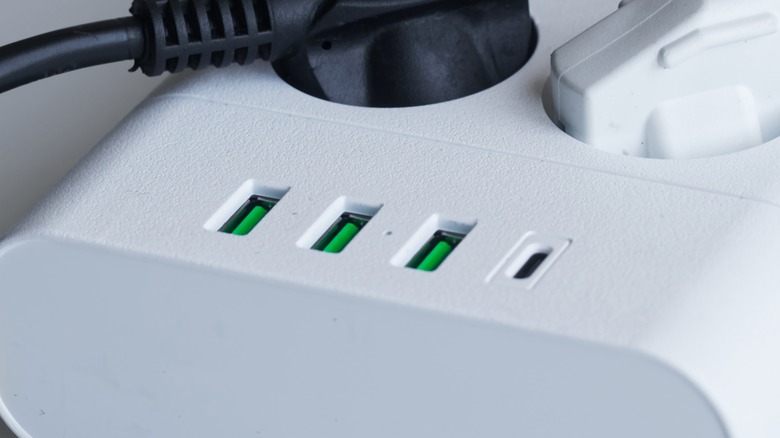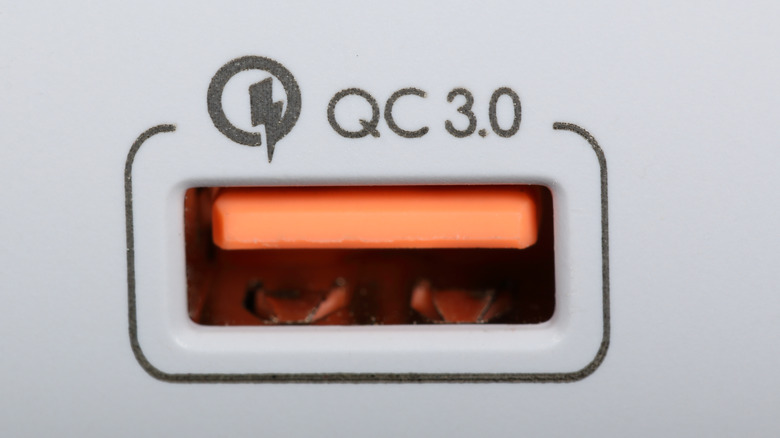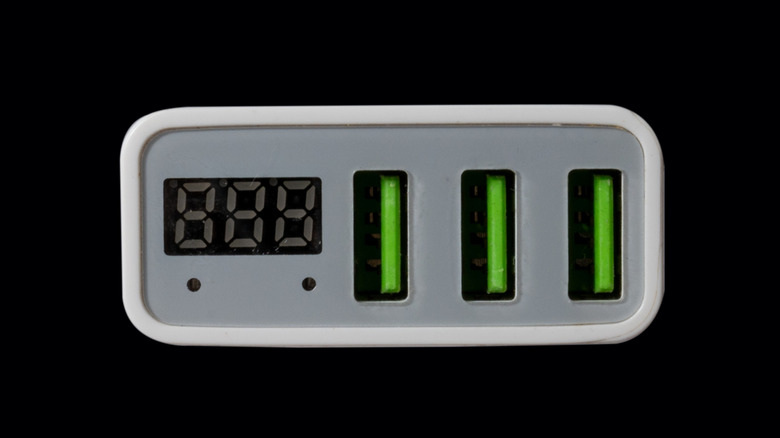What Does It Mean When A USB Port Is Green?
USB ports are not the easiest connections to understand. For years, the USB Implementers Forum (USB-IF) has struggled to come up with a way to clearly label the many iterations of this common wired port, on top of the various charging speeds and data capabilities they support.
To make matters even more confusing, device manufacturers went ahead and created colored ports for labeling USB connections. One of these colors is green, which usually means the interface is a Qualcomm Quick Charge (QCC) port. Introduced in 2013, the charging standard is already on its fifth generation, which now supports charging speeds of over 100 watts under the right conditions. Conveniently, the latest version is also backwards-compatible with all older QCC connections.
If you've ever wondered why your laptop, monitor, or USB docking station has red, blue, or yellow USB ports, too, it's because the talented folks who designed all this hardware wanted the different port types to be easier to decipher for us consumers. The only trouble is that manufacturers never agreed on what all these different colors officially represent. But even though we don't have any "official" documentation to roll with, many USB port colors represent the same function from one device maker to the next.
Green isn't always a Quick Charge indicator
Neither Qualcomm nor the USB-IF told device makers to use a green-colored USB port (above is a QCC port that's orange, for example). Yet the companies behind some of our favorite phones, tablets, and power banks went and did it anyway. Since there aren't any official rules for using the green tab as a USB identifier, this means that a device maker could create a product with a port that's green just to be green. Without a universal standard in place, consumers may assume that a green USB port has special capabilities related to anything from charging speed to data transfer, when in reality, it could just be a standard USB connection with no extra frills.
It's possible that an official, unifying standard will come along in the future. Perhaps it will officially declare the green USB as a Qualcomm QCC connection, which is what green is most commonly associated with now. But until that day comes (if it ever does), it's a bit of a Wild West situation for green-topped USB ports.
How to tell what a green USB port really does
If you're wondering exactly what your device's green USB ports are meant for, your best bet for the most accurate answer is the user manual or quick-start guide that came with the product. If you've lost this documentation, it's usually not too difficult to track these specs down on the manufacturer's official site. Some device manufacturers also include printed labels above USB ports to indicate what version, speed, or special technology they're capable of. "SS," which stands for SuperSpeed, is one of the more common labels you'll find in the wild, but you might also see indicators like a battery icon to mark which ports are capable of fast charging.
If you can't find documentation and there aren't any labels to speak of, one practical alternative for figuring out what green means is plugging in a QCC-capable phone or tablet and seeing how quickly it charges. If it charges much faster than any of your device's other USB ports, there's a good chance that the green indicates a quick charging port. At this point though, there are far more QCC-capable chargers on the market than there are smartphones.
Here's hoping the USB-IF will introduce a unifying standard for USB colors, but that isn't going to help anyone who bought a device with a green USB port before such a standard was introduced. For the foreseeable future, it's probably just safe to assume two things when you see a green port: The connection charges devices very quickly, or it has some kind of special feature that's exclusive to the product.


